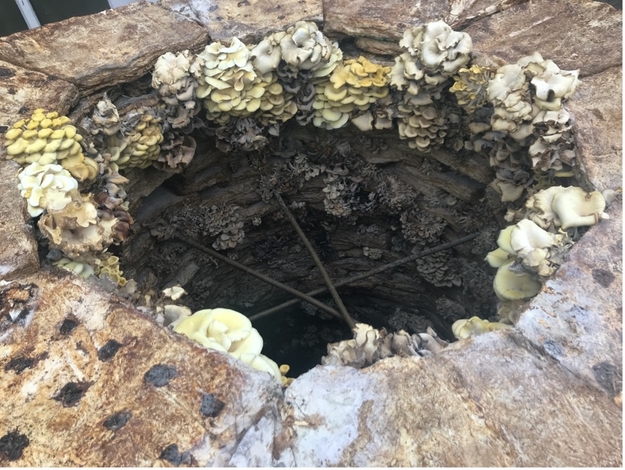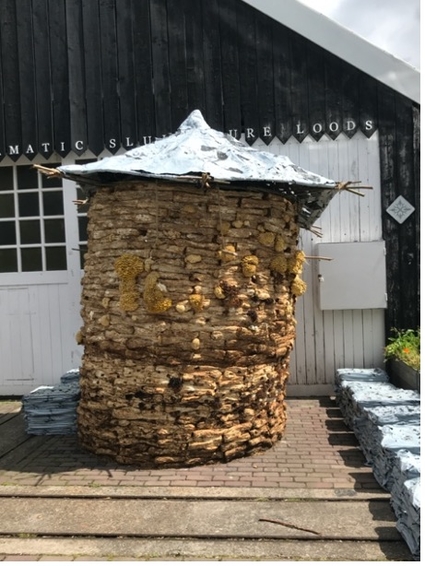Death is in the air...
Last week the hot air was filled with gray and the towers with its fruits. The heat and drought had threatened the mycelium enough to cause a wave of blooming mushrooms. As a last resort to leave something behind, the desperate mold blew clouds of gray spores into the air. Apparently, it is not a human invention: the act of death denial.
...And you can smell it
Fresh mycelium smells like cucumber, I would say. For a short moment a light and fresh smell fills your nose as soon as you open a bag of healthy mycelium. Yet as soon as it is out of its plastic skin and build into a tower, the smell starts to mature. As the texture changes from fluffy and soft into sturdy and even hard, the smell changes from cucumber to a dried meat-like smell. Mushrooms turn from bright yellow to brown, black, purple or another expression. Until they eventually start to rot, get eaten or dry out. Yet, dried mushrooms make for a great stock.
What once was called "Big" Ben
The biggest tower we build so far is called Ben. At least, it used to be the biggest tower. Now, it has shrunken the most and is slightly leaning to the sun. We considered building on top of Ben, trying to keep the height. Yet, it might be a good time for its transition. Since the tower is only one part of the mycelium pigeon tower cycle.
Building with living material means that it won’t last forever. That is the beauty of it. At some point it will be broken down, eaten by (un-)invited invaders. Together with the pigeon excrements, the tower will turn into compost. Ben will become an open invitation for plants and other organisms. If it isn’t already.
For us this might also be a new chapter. What plants are suitable to plant in the tower? and what do we want it to become? If we want to grow food, food for whom? Keeping the seasons in mind. Arne planted a corn plant in a pile of leftover mycelium, as a first experiment and Ben might follow soon. On to its next life.
A battle of whites and greens
Meanwhile, within the latest tower that we have been building, a battle is being fought out. A battle of whites and greens. Inside the mushroom farm the blocks of mycelium are grown in rooms that are as sterile as possible, to prevent other molds and microbes to nestle inside the straw, and to optimize the mushroom growth.
Green Mold on "Gentle" - This photo is part of The Plastic Picknicker .


We are building the pigeon towers in the open air. So, the circumstances are far from perfect for the yellow oyster mushroom. They are constantly challenged by rival molds, which results in battlefields covered in snow and pink fluff. Especially inside of “Folk”, our latest tower, which is built from the beginning of summer. The oyster mushroom mycelium is attacked by multiple enemies. We are curious to see how well our cultivated mycelium can stand against its wild rivals. That doesn’t mean we completely stand at the sideline. Many (micro)organisms are welcome in the tower cycle at some point. Yet, in the first stage we stand with the yellow oyster mushroom, in the hope it will grow and hold the tower we build together. Until it is time for its demise.






